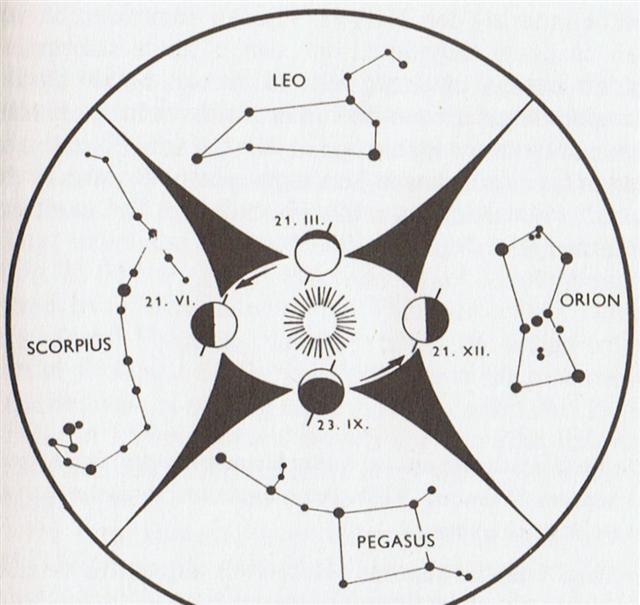2. To find a solution to the problem we have to go back to the basic facts. My astronomy book has a pair of explanatory pictures:
In the first of the pictures is visualized how Sun appears to be moving in the opposite direction among the constellations of the zodiac compared to how Earth moves in its orbit. Looking at stars as they rise over the eastern horizon in the night the stars with lower right ascension will rise before those with higher right ascension, thus the sky dome has e.g. Aries before Gemini. The order in the night is the same as that for Sun along the zodiac. The second picture has e.g. Leo on the night side of Earth, the side opposite to Sun. The date 21.III. means March 21. To see Leo in the night it is not possible too look for the constellation in September because at that time Leo and Sun are close together. From my personal experience I can guarantee that Orion is visible in the night sky of January (the present month). Winter solstice north of the equator is at 21.XII. Should we not expect the G text to describe the prominent stars distributed over the months in which it is possible to see them? When we for instance have decided Antares (in Scorpius) to be at glyph 186 it seems reasonable to assume the month should be June (and not in November, 250 days beyond March 21). In Stars and Glyphs the correspondences between star positions and glyphs are based on the heliacal risings of the stars but to see them it is necessary to move half a year ahead in time. |

